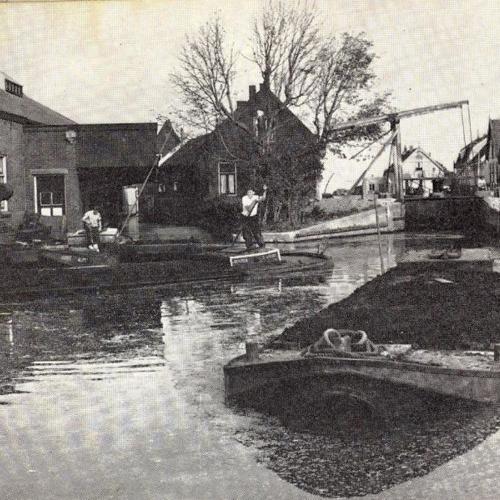
Veenderpolder and Lijkerpolder: The lock
Veenderpolder and Lijkerpolder: The lock
The Lock
The year is 1632. The ingelanden (landowners) of the Veenderpolder and Lijkerpolder outside the dikes complained of wet feet. The water of the Braassemermeer and the then existing Haarlemmermeer flooded more than once in the already marshy polder. In the water board's headquarters in Sparendam the water board took the decision, under pressure from the increasingly angry landowners, to build quays around the Veenderpolder and Lijkerpolder outside the dikes in Roelofarendsveen and create a physical watershed. To maintain the connection to the Braassemermeer (for transit and water regulation), it was decided at the same time to build four wooden locks: in Rijpwetering, Nieuwe Wetering, Oude Wetering and in Roelofarendsveen. The lock in Roelofarendsveen is the only remaining sluice, the others disappeared over the course of the centuries.
Expensive
The wooden lock in Roelofarendsveen worked well but was expensive to maintain. Wood has to endure a lot in water. The polder administration had its hands full to pay ongoing bills for the many maintenance operations. In order to avoid rotting of the locks, for example, the wood had to be tarred regularly. Buckets full of broken shell were used to cover the tar.
Despite the high maintenance costs, it took more than 265 years before the wooden lock in Roelofarendsveen was replaced by the current stone lock. The gardeners in the Veenderpolder and Lijkerpolder outside the dikes now also grew vegetables for sale. Merchants buying vegetables transported them through the Braassemermeer to Leiden, Amsterdam and Haarlem. The use of the lock increased and maintenance costs started to skyrocket. In 1897, to protect the landowners from either a financial disaster or a water disaster, the polder board decided to replace the lock. In the contract it was specified that the new stone lock should be exactly two barges long. The proposal to build a lock that offered space for four barges was voted down. Too expensive, said the majority of the polder board.
In 1897 it took 224 piles, one wooden floor, 250 m3 masonry and four doors to replace the old wooden sluice from 1632. The work was outsourced to mason Dirk van Essen from Woubrugge for an amount of fl 9776 - Old Dutch guilders.
Lively Area
Until 1965, the sluice, the auction and the nearby cafes Wagenaar and De Haven (started in 1876 as a ‘living room’ cafe) were the beating heart of activity in the Veen. After the auction closed down, the lock and its environs were mostly known as the most beautiful and historic place in Veen. A place bustling with activities, especially on sunny days: boating, biking, hiking, running, terraces, celebratory fairs and so on. In 1985, when the Veen lock was threatened with closure, a group of concerned citizens took notice. They established Stichting Behoud & Beheer Sluis Roelofarendsveen (Foundation for the Conservation and Management of the Roelofarendsveen Lock). Thanks to this foundation the lock and the connection between the historical Veenderpolder and Lijkerpolder beyond the dikes and the Braassemermeer were preserved.
This story is part of the Tulip Route. A cruise full of stories about the flourishing Veenpolder of Roelofarendsveen. The Tulip Route is free. A route map can be found on this website or at one of our tourist information centres, in the vicinity of bars and restaurants or marinas.
 The Tulip Route in Roelofarendsveen is made possible by local entrepreneurs. This story is brought to you by: Café de Haven.
The Tulip Route in Roelofarendsveen is made possible by local entrepreneurs. This story is brought to you by: Café de Haven.





